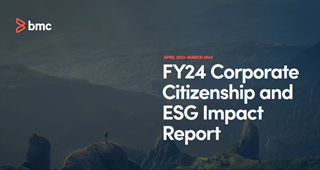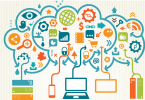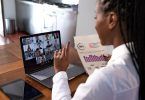In today’s rapidly evolving business landscape, the intersection of environmental sustainability and technology is more critical than ever. A recent survey by Gartner® highlights this shift: “64 percent of CEOs said they view environmental sustainability as a growth opportunity.”1 I believe this perspective is further bolstered by the inclusion of sustainable technology in the Gartner Top 10 Strategic Technology Trends for 2024 2 report, which, in my opinion, signals a clear readiness among executives to weave sustainability into the fabric of their organizations.
The role of IT in achieving sustainability goals
As organizations across all industries aim to reduce greenhouse gas (GHG) emissions and achieve carbon neutrality, IT leaders are finding themselves at the forefront of this transformative journey. Digital transformation initiatives that focused on accelerating business outcomes are now being realigned to incorporate sustainability goals, enhancing organizational resilience and setting a foundation for sustainable growth.
Around the globe, governments are steering the shift towards sustainability through a mix of initiatives, including the implementation of carbon taxes, voluntary schemes, and rigorous regulations. This shift is further accelerated by the expanding mandate for detailed corporate sustainability disclosures.
The evolving regulatory framework, highlighted by new directives from entities like the European Union and the United States Securities and Exchange Commission (SEC), is significantly influencing corporate strategies. In particular, the SEC’s pending revision of its climate-related disclosure rules introduces heightened levels of transparency, compelling organizations to meticulously report their direct (scope 1) and indirect (scope 2) GHG emissions in relevant operational areas.
The challenges ahead
Despite the clear mandate, IT leaders face several challenges integrating sustainability into their strategies. These include a scarcity of expertise in sustainable IT implementation, complexities associated with hybrid cloud environments, inefficiencies across IT lifecycles, controlling the energy demands of advanced language models in generative AI, and coordinating myriad supplier relationships.
As the surge in the Internet of Things (IoT) devices and advancements in generative AI exert unprecedented stress on data centers across the globe, research from McKinsey & Company shows that the connected devices that employees use every day—laptops, tablets, smartphones, and printers—generate 1.5 to 2 times more carbon globally than data centers.
And those devices are expected to reach 55.7 billion by 2025. While the sheer volume alone demands a critical examination of the environmental impact of technology, a Capgemini report highlights the current disconnect in the perceived responsibility. It found that a staggering 89 percent of companies recycle less than 10 percent of their IT hardware, and globally, only 43 percent of executives are aware of their organization’s IT footprint.
Tackling these issues requires a comprehensive strategy that includes concrete actions to address environmental, social, and governance (ESG) principles, energy consumption, and sustainable practices, alongside organization-wide adherence to regulations. With the growing demand for computing resources to support evolving technologies like generative artificial intelligence (AI), the environmental footprint of technological advancements can no longer be overlooked.
While generative AI is credited with improving process efficiency, it also has some GHG concerns of its own. A recent joint study by Hugging Face AI and Carnegie Mellon found a stark difference in the energy usage of generative AI for imagery and text. MIT Technology Review explains it this way, “Generating 1,000 images with a powerful AI model … is responsible for roughly as much carbon dioxide as driving … 4.1 miles in an average gasoline-powered car. [The] least carbon-intensive text generation model … was responsible for as much CO2 as driving 0.0006 miles in a similar vehicle.” And yet, PwC’s 2023 Emerging Tech Survey found that just 22 percent of business leaders were concerned about sustainability impact when citing issues with deploying generative AI.
A call to action for IT leaders
IT leaders play a key role in advancing sustainability within their organizations. While there’s a gap between aspirations and realization, this presents a unique opportunity rather than a barrier.
SustainableIT.org highlights that many IT organizations have yet to fully embrace ESG mandates, frequently due to implementation hurdles and the absence of standardized carbon footprint evaluation frameworks. However, this scenario offers IT leaders a chance to step up, utilizing their distinct skills and connections to spearhead meaningful sustainable transformation.
Through such proactive leadership, IT departments can transform from being seen as part of the problem to becoming an integral part of the solution, driving forward not only the sustainability agenda but also reinforcing an organization’s commitment to social responsibility and ethical governance. In doing so, IT leaders contribute to the global effort to combat climate change while also enhancing their organization’s reputation, attracting and retaining talent, and potentially realizing significant cost savings through more efficient resource use.
Five steps towards sustainable IT
- Define clear sustainability targets: Start by setting specific, measurable, and ambitious sustainability goals that align with broader standards. Identify critical areas for improvement and commit to ongoing progress in reducing your IT footprint.
- Engage with suppliers for sustainability: Work closely with your suppliers to ensure they adopt environmentally responsible practices and materials. This collaborative approach amplifies your sustainability impact and encourages a shift towards greener industry practices.
- Leverage technology for efficiency: Use automation and other technological innovations to streamline operations, reducing energy use and waste. Optimizing processes and embracing cloud solutions can also help significantly reduce your energy consumption.
- Advocate for sustainable policies: Actively support policies and regulations that encourage sustainability in the tech industry. Engage in dialogues, participate in forums, and advocate for green practices to help shape a more sustainable regulatory environment.
- Cultivate a culture of sustainability: Educate and inspire your team to adopt sustainable practices. Offer training, encourage innovative ideas for sustainability, and recognize efforts to meet your environmental goals, fostering a workplace that values green initiatives.
BMC: Our sustainable IT journey
At BMC, we’re on a path towards sustainability, aiming to become a net-zero enterprise by 2030. Through a holistic approach that addresses emission inefficiencies across the business, BMC is advancing its own sustainability agenda and empowering our customers to do the same. By offering expertise in sustainable transformation, operational efficiency solutions, and visibility into workload optimization, BMC is at the forefront of driving sustainable change in the IT sector and beyond.
Conclusion
For IT leaders, the call to action is clear: sustainability must be integrated into the heart of IT strategy and operations. By setting clear goals, adopting green practices, collaborating with suppliers, optimizing operations, and advocating for supportive policies, IT leaders can drive their organizations towards a more sustainable and prosperous future. The path forward requires a collective effort and a transformative approach, but the rewards are immense—for the planet, for people, and for prosperity.
1Gartner Podcast, Why All Executives Should Focus on Sustainable Technology to Drive Growth, October 17, 2023. GARTNER is a registered trademark and service mark of Gartner, Inc. and/or its affiliates in the U.S. and internationally and is used herein with permission. All rights reserved.
2 Gartner Article, Gartner Top 10 Strategic Technology Trends for 2024, Ava McCartney, October 16, 2023.







